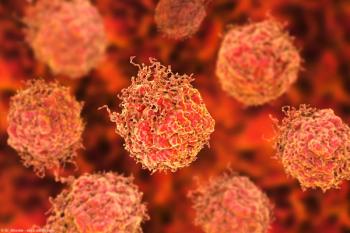
miniPCNL in the pediatric patient: John Michael DiBianco, MD, outlines his technique

"I think the patients that benefit the most are patients that have certain types of stones that potentially are much harder to treat with some of the more minimally invasive types of procedures," says John Michael DiBianco, MD.
In this interview, John Michael DiBianco, MD, discusses why a miniPCNL might be appropriate in a pediatric patient, describes his technique, and offers pearls on performing the procedure. DiBianco is an assistant professor of urology at the University of Florida, Gainesville.
This transcription was edited for clarity.
Who is the ideal patient for pediatric miniPCNL?
It's my opinion that no patient population benefits more from a miniaturized technique than a pediatric patient, which kind of makes sense. If you think about how small the kidneys are, and previously in a lot of places, we use 30 French, very large bore access, compared to an adult-size kidney, typically, that transition and that difference, it was quite large. So, I think the patients that benefit the most are patients that have certain types of stones that potentially are much harder to treat with some of the more minimally invasive types of procedures like ureteroscopy, or shock wave lithotripsy. So large-volume stones, per the guidelines, and especially in the lower pole.
In the lower pole, the kidney is a harder place to reach with certain scopes and doesn't drain as well. So some other techniques like shock wave lithotripsy offer a little bit less stone-free rates, are less efficacious. So a lot of patients, especially pediatric patients, because they're so small, a lot of times have to undergo a lot of repeat procedures. Let's say you try to go and do a ureteroscopy, and the scope is too big. You can't fit it in the ureter, you put a stent in, so they have 1 anesthetic, and then they come back, and then you go up there, you try to take care of all the stone, maybe it's too hard, for whatever reason, you can't get all the stone on that trip, then you get another stent and you come back.
A lot of the patients that we treat here have either had a couple of procedures beforehand, or they're at high risk of not being very successful with one of those other types of minimally invasive procedures: shock wave lithotripsy or ureteroscopy. And so a lot of my pediatric colleagues will reach out to me to see if they might be an appropriate candidate for miniaturized PCNL.
Please describe your technique for miniPCNL in pediatric patients.
Like anything else, anytime we do a PCNL, we're going through the skin, through the back into the kidney, we always get a CT scan. That's pretty standard. One, that's helpful for me because it classifies stone volume, maybe even density, all that kind of stuff. But it also shows me, do I have a window, is there an area that I actually can safely do this without hitting other things that might be in the way, like bowel, spleen, some of the other things where you don't want to make a hole. So we always get that, and as long as there is a window, we've been pretty successful in performing the procedure.
We typically set them up in this modified supine position where they have the same side that we're operating on, that leg stays straight, and the other leg is in a stirrup so that we actually have access from both below, like a normal ureteroscopy-type of positioning, but also the flank, where we're going to be doing the majority of the percutaneous work. I use x ray, I use fluoroscopy. That's just the way I was trained; that's the way I'm comfortable. We use as low a dose as possible, because obviously, these are younger patients, so certainly it's a higher concern, at least of mine, on how much radiation they're getting. There are some colleagues that I'm aware of out there that are using no fluoroscopy and no x ray; they use ultrasound. I'm not as comfortable with that, so I don't do that. But it's certainly been described. We use a small catheter in the bladder, in the ureter to inject contrast into the kidney. We use that contrast and an x ray and fluoroscopy at the same time, to see where on the skin, we enter with a needle in order to get into the kidney in the appropriate position.
We use a lot of these different things to see what's the best place to enter, what's going to be the safest, and what's going to be most successful where we only need to make 1 puncture in the kidney. And then once we've done that, and we're successful with it, we decide, usually preoperatively based on the stone volume, how big we're going to make that hole. Miniaturized PCNL can be anywhere from 22 French down to 12 French, so it's a very wide range that we potentially have the access to. We use one of the kits, one of these tools that has several different sizes. Most commonly, I use an 18 or 16 French access, but it's really dependent.
When you look at our series, we've treated about 8 patients so far. One patient we did it on both sides, so 9 renal units overall, and we've gone anywhere from 16 French, all the way to 20 French, with our sizes, so it really just depends. Once we do that, then we start working and usually the stone breaks up very nicely, and we can take everything out through that access, and they don't need anything else through that hole so we can close it up. And we typically also, as long as the ureter allows it, we can put a scope in from below because of that positioning, we can easily reach between the legs and at the flank. And we'll search the rest of the kidney ureteroscopically just to make sure we don't miss anything. Then we leave a stent afterwards. Sometimes, we leave it on a string so that the patient can take it out at home a week later or so, depending on the family's comfort level, the patient's cooperability, depending on their age.
We've been pretty successful here. I think what's nice too about that positioning, a lot of times historically, we would do percutaneous surgery with the patients on their front, so they're kind of in a Superman/Superwoman position. Sometimes, if you run across issues, like a stricture or some sort of anatomical problems, it's a little bit harder to do your typical endoscopic ureteroscopic techniques in that position.
What's nice about that the modified supine position is that you kind of have all of those techniques and tools available in case you have to. In the pediatric population, we don't tend to see a lot of stones, thank goodness, but when you do, there's usually a reason. And a lot of times, it's anatomical. So I think it gives us the ability to do other things that might be necessary in order to treat that patient and that stone. I can think off the top of my head about 3 of the patients had ureteropelvic junction obstruction, whether it's stricture or what have you, that we had to treat concomitantly, along with the stone. Some of them have altered anatomy, double ureters, duplex systems, and so forth. So, it gives us a lot of adaptability to change the operation to suit the patient, rather than forcing the same operation on a wide variety of clinical scenarios.
How did you come to learn to perform miniPCNL?
When I was in residency, I learned how to do standard adult PCNL, and where I was trained, we did fluoroscopy, and we did it prone, sort of in that Superman position. When we rotated at Children's National, because I went to residency at George Washington in DC, I think we maybe did 2 PCNLs in the 6 months I was there, so not a lot. Fortunately, this isn't a very common issue. When I went to fellowship, I did a 2-year fellowship in endourology to learn some more advanced stone and BPH techniques. I learned, and I was trained in the supine position, which has certainly been much more adaptable. And there's a pediatric endourologist there who did PCNLs on pediatric patients. To be very honest with you, we didn't do a lot of the procedures that I'm doing now. I've kind of adapted some of those techniques that I've learned. And with the support of the pediatric department and the pediatric urologists I work very closely with, we've been very successful in identifying the right patients and, knock on wood, the patients are doing very well.
What are some pearls regarding miniPCNL in pediatric patients that you'd like to share?
The biggest thing that I tend to want to dispel is that this is a very invasive and a very dangerous procedure, which is one of the reasons why in the pediatric population, I tend to see that patients don't typically get the most effective procedure. They tend to get minimally invasive, potentially less effective procedures and several of them. It's not because people don't want to do the right thing for the patient. It's because they're worried and when people are small, we don't want anything to go wrong, and it's a very good reason. But what I would tell you is that multiple procedures are not without their risks as well. And the more procedures in the ureter, the potential there is for scar tissue down the line or more suffering with a stent for a longer periods of time. And so I think what's really nice about these minimally invasive PCNL procedures is that they've been shown, especially in adults, to decrease complications compared with maximally invasive PCNL procedures, for sure, but even sometimes compared with ureteroscopy.
The fact that we're getting smaller and smaller and keeping some that efficacy is very helpful for patients, and I think, at least at this point, is helping us to provide evidence that it can be done safely. And that's the biggest thing that I typically want to dispel—this idea that anything we do through the back is associated with those older methods of percutaneous nephrolithotomy and that has everybody's attention and maybe some fear.
I would say that you definitely need to be very adaptable. You have to have a great team, a great pediatrics team and great pediatric colleagues if you're not a pediatric urologist yourself. You need to have great anaesthetic team, very supportive, and you need to have a wide variety of tools available in case something unexpected comes up like a UPJ obstruction or ectopic ureter or something, because unfortunately these kids make stones for a reason, and you just have to be ready to handle the unexpected.
The cases that I've done have been here, at least, have been some of the most, I guess, impactful and really make me proud and happy to be a urologist and to do something [for which] the patients are incredibly grateful. Most of these patients have lived with stents for a long time, and have had to undergo several procedures. It's very remarkable how tough a lot of these kids are, and how well they handle these operations, and what good spirits they're usually in. And so, I think it's something that's very satisfying, and I think with the smaller and smaller and the better equipment that continues to be developed, and different techniques that continue to be developed, I think we're just going to get better and better and hopefully we can prevent a lot of future suffering for a lot of these kids that unfortunately develop stones.
Newsletter
Stay current with the latest urology news and practice-changing insights — sign up now for the essential updates every urologist needs.


















